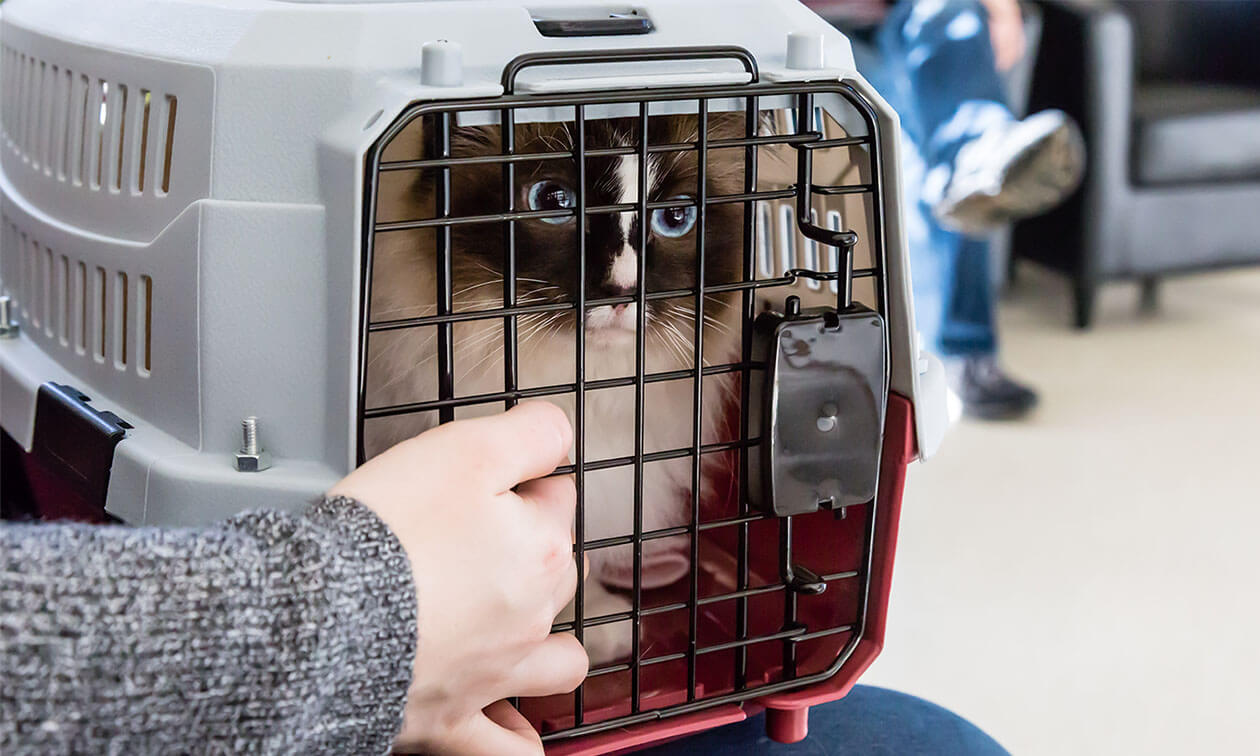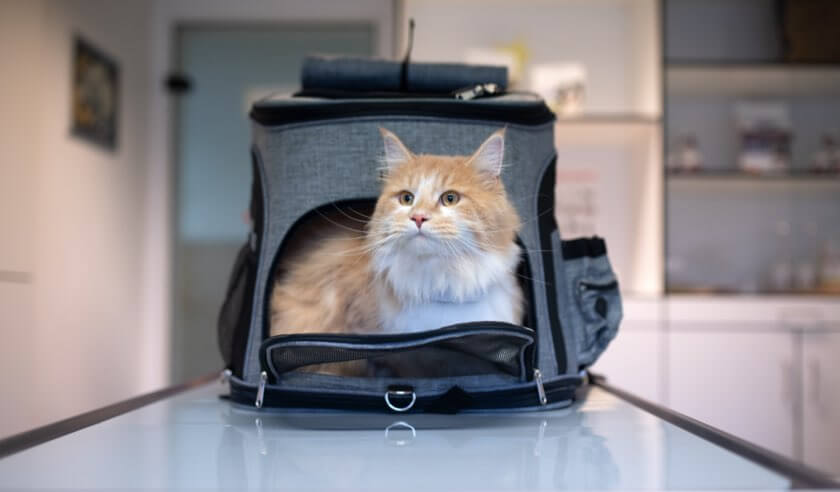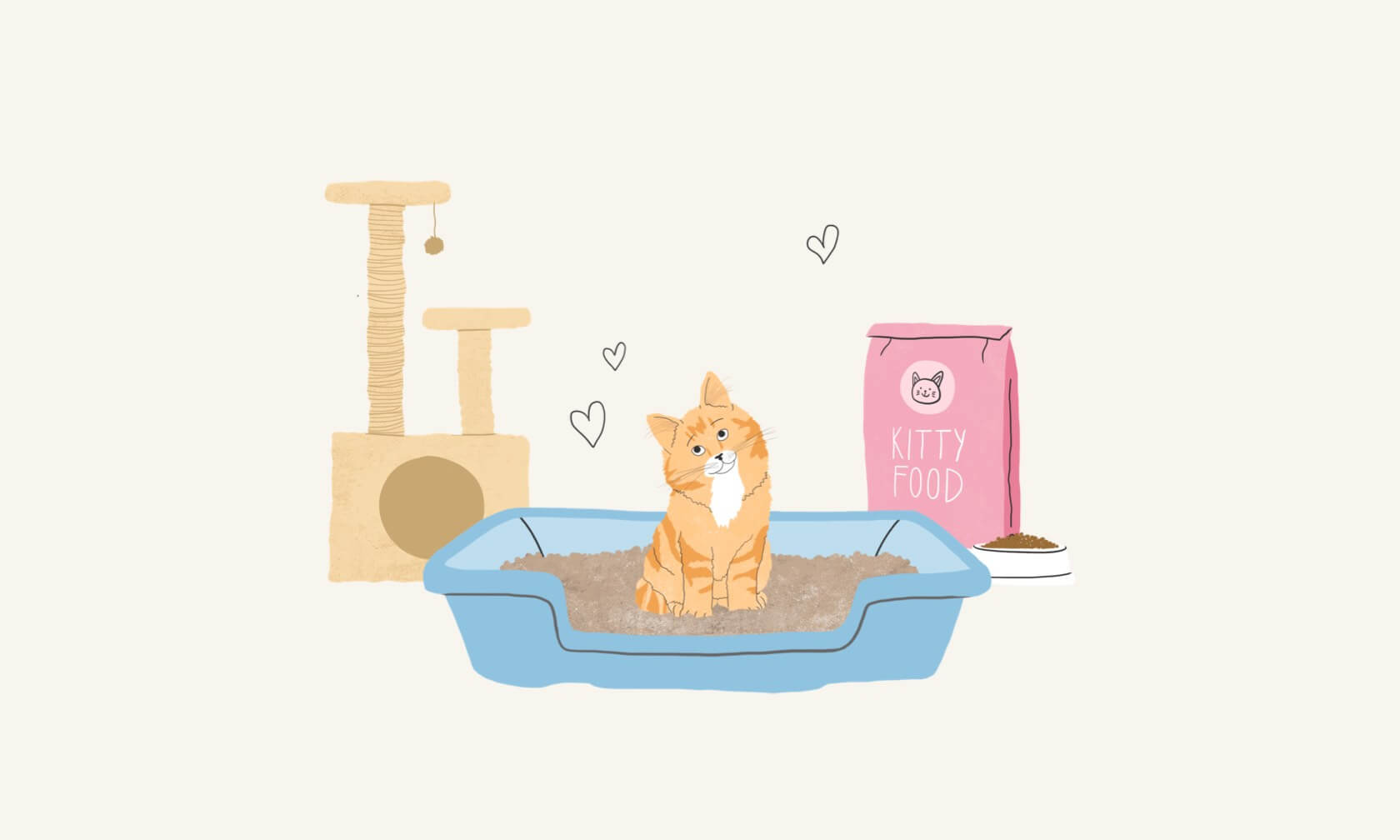Choosing a cat carrier may seem like a simple task, but that couldn't be further from the truth. There are many factors to consider, such as style, features, what your cat prefers, and how it will be used. Understanding what matters when selecting a cat carrier will drastically improve your cat's (and your) travel experience. Having the correct carrier will keep your cat healthy and happy.
What To Consider When Choosing a Cat Carrier
Selecting a cat carrier is much like selecting your mode of transportation. You want an option that's safe, comfortable, durable, and affordable. This investment can significantly impact how your cat travels and the degree of stress they feel.
Consider what's safe and comfortable from your cat's perspective, not yours. Cats like cozy, dark, enclosed spaces for a sense of security – a frightened cat likes to feel invisible. Cats are often scared when they're taken outside the home. Your carrier can help ease this fear by meeting these needs.
Durability and affordability are also important. A well-made cat carrier will last considerably longer and will reduce the risk of your cat getting injured in the carrier. Selecting one your kitten can grow into that will take them through their senior years will prevent you from buying multiple carriers throughout your cat's life. So, make sure you buy one with enough room for your cat to grow into their adult years. Spending more on a better-quality carrier may save you money in the long term.
The way the carrier will be used is also a consideration. If you have a small vehicle, you may have size limitations. A large carrier may be required if you travel long distances vs. quick trips to the vet clinic. If you're walking with your carrier or have limited mobility, a carrier with a detachable wheelbase could help. If you are going to be flying with your cat, check the type and size of carrier that your airline allows.
The most important thing to consider is the cat’s safety and comfort. It is critical to make sure there is enough room for your cat to get fresh air to keep them from overheating. It can be scary for your cat (and difficult) to pull your cat out of the front of the carrier. Try to look for a carrier that has multiple openings so that you can get your cat in and out of it easily. For example, many carriers will have both front and top openings.
Certified Safe Cat Carriers
The Center for Pet Safety does crash testing on pet carriers and crates. Only a few pass their stringent standards, using a seat belt or latch system to help protect the cat in the event of a crash. This is a great resource when shopping for a cat carrier.
Types of Cat Carriers
There are three main types of carriers, each with advantages and disadvantages. Cardboard carriers are exactly what they sound like – they're made from cardboard and are not sturdy. Soft-sided carriers generally combine canvas material, mesh, metal frames, and zippers. Hard-sided carriers are made from plastic or other sturdy materials. Let’s break down the pros and cons of each type of carrier below.
Cardboard Cat Carriers
Advantages:
- Affordable
- Disposable
Disadvantages:
- Not durable
- Only good for temporary transport
- Cannot be used for airplane travel
- Not strong enough to hold larger cats
- Cats can chew through them
- Cats can escape fairly easily through the top
- Not safe for cats to be left unattended, especially if they are upset or active
- Cannot be properly cleaned and disinfected if soiled
Cardboard carriers are rarely recommended except in emergencies where no other option is available.
Soft-sided Cat Carriers
Advantages:
- Comfortable
- Lightweight
- Easier to store in closets or under beds
- Can more easily fit under the seat of an airplane due to some flexibility
- Many have top entry, which is great for veterinary visits and more easily getting your cat in the carrier
Disadvantages:
- Fabric or mesh can be damaged
- Poor physical protection from impact, accidents, or weight on top of them
- Less secure since cats can more easily escape via zippers or damaged mesh and fabric
- Can be harder to clean depending on the type of fabric and padding
Hard-sided Cat Carriers
Advantages:
- Durable and solid
- Provide protection from impact
- Easy to clean and disinfect
- Difficult for cats to escape from
- Top and front entry options available
- "Clamshell" style available, where the top half can be completely removed
- Can be used for airplane travel
- Can more securely contain cats who are aggressive or desperate to get out
Disadvantages
- Bulky
- Larger options can be heavy
- More difficult to store
- Require bedding or blankets for comfort
Cat Carrier Features to Consider
Many features can make a carrier better or worse for your cat and you. Here's a list of things to consider that will impact the features you need or want to avoid.
Safety Features
Any carrier you select should have a way to strap it into a vehicle with a seat belt. You can also look for carriers that have been crash-tested for safety as mentioned above. If it cannot be properly belted in, the floorboard behind the passenger seat is considered a safe place for the carrier while driving in a car. As mentioned above, ventilation is also critical in a carrier so that your cat can get enough fresh air and does not overheat.
Size Appropriate
A carrier should be appropriately sized for your cat. It should be large enough to lay down, stand, and turn, with a cozy blanket or pad inside. If it's too large, your cat will tumble around in it. If you plan on using the carrier for airplane travel, be sure its dimensions are airplane compliant. Make sure you can easily manage the size and that it will fit in your vehicle.
Practical and Convenient Styles
Both soft-sided and hard-sided carriers come in different styles. While your cat likely doesn't care about style, you might. A carrier with rollers or a stroller style can be helpful when walking longer distances. They're also great for those who can’t carry heavy things.
Rolling carriers and strollers can cause stress for some cats since they can be bumpy and loud when going over rough or uneven surfaces. Removable wheels will keep them from sliding around in a car.
While backpack carriers are convenient and trendy, behavior experts often recommend against them. These carriers tend to be small, forcing the cat to sit upright. With your cat behind you, you can't cover the window to help your cat feel secure or see how they are reacting to the experience and they're going to be jostled around as you move. They may also provide poor ventilation and the clear domes can leave your cat feeling exposed. Keep in mind, that many airlines do not allow backpack style carriers.
Ease of Entry
A carrier with a top and front entry is beneficial for several reasons. Top entry is helpful when putting cats into the carrier and taking them out, while front entry allows you to acclimate and train your cat to enter the carrier on their own more easily.
Even better, the clamshell style that allows for the removal of the entire top half of the carrier is ideal for training. You can start with just the bottom half and gradually put the pieces together as your cat is ready. They're also helpful if your cat is scared at the vet. Many veterinarians will remove the top and do as much of the exam as possible with your cat securely in the bottom half, and it's much less traumatic to lift them out of the bottom half rather than pulling them through a small opening.
Securing and Locking Mechanisms
For soft-sided carriers, be sure they don't use Velcro closures or snaps. They're not secure enough to prevent your cat from escaping. Zippers are best and many have locks or latches that keep your cat from sticking a paw through and working the zipper open.
Hard-sided carriers can have their sides secured with screws, sliding plastic locks, side snaps, or plastic pegs. Screws are the most durable and secure and they are also easy to replace. Sliding plastic locks are fast and easy to use when removing the top of the carrier. Side snaps are easy to open and close, but they can be noisy, which may scare some cats. Plastic pegs are fast and easy to use when removing the carrier's top, but they can break, are easily lost, and are difficult to replace.
Convenient Storage
Select a carrier you can easily store away or one you don't mind leaving out, which is a better way to help your cat get used to their carrier. Since soft-sided carriers are more flexible, they can be easily stored in closets or under a bed. Even though hard-sided carriers are a bit bulkier, finding one that is easy to disassemble (and re-assemble) can make storing easier since one half can fit upside down into the other.
Creating Privacy
While you need ventilation in your cat's carrier, you also want privacy. Ideally, the carrier comes with flaps that you can close over some openings, or you can cover three sides of the carrier with a sheet or blanket. This will help your cat feel more secure.
Cleaning and Maintenance
A carrier that is easy to clean and disinfect is essential. Cats can have travel sickness, especially when stressed. They also commonly pee when scared. Being able to easily clean and disinfect the carrier is important.
What Cat Carrier Works Well for Long Car Rides?
If your cat will be in the car for more than a couple of hours, you'll want a carrier large enough to fit a travel litter box and a cozy sleeping spot inside. This ensures they have room to move around a bit. If there's enough space to include a little hiding spot, that's ideal. If not, you can cover three sides of the carrier so it feels more secure. Ideally, you want a carrier that has been designed and tested for safety, and that you can properly strap into the car. Remember to always have your cat in their carrier when taking them somewhere, as it is safer for them and for you.
Selecting a carrier can be daunting and a good resource is your veterinarian. They have seen many types of carriers and are able to give you a specific recommendation that is best for your cat and your carrier needs.
ZPC-03245





